Amaryllis, or the Lily of the Nile, is a stunningly beautiful and elegant flower that has captivated many. Its popularity has led people to incorporate it into their home gardens, adding a touch of splendor and refinement to their green spaces. This guide will teach you everything you need to know about growing and caring for these exquisite flowers.
1 Introduction to Amaryllis
Amaryllis, also known as the four-sided lily or Hippeastrum, has its origins in the tropical regions of the Americas. Today, it is widely cultivated in Vietnam and around the world, with a particular fondness for its vibrant and graceful blooms.
 Introduction to Amaryllis
Introduction to Amaryllis
2 Characteristics of Amaryllis
Amaryllis bulbs resemble onions and have a cluster of roots with multiple smaller roots. The plant grows upright, reaching heights of 50 to 70 cm, with straight, narrow, flat, and long leaves.
Amaryllis plants grow similarly to onion plants, with each bulb producing 2 to 5 large flowers at the top. They can thrive in two different environments: in soil or through hydroponics.
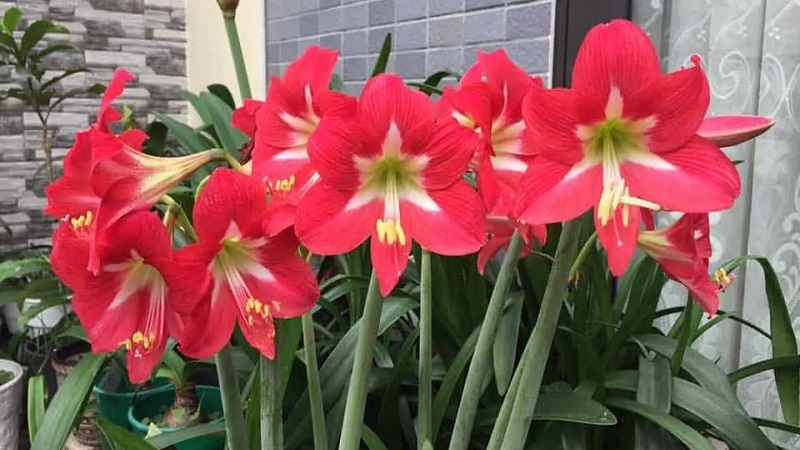 Characteristics of Amaryllis
Characteristics of Amaryllis
There are two types of Amaryllis: single and double. The single variety has six petals arranged in two alternating layers of three, forming a triangle. The double variety, on the other hand, boasts more petals, with three or more layers.
Amaryllis flowers come in a variety of colors, including red, white, orange, and red-orange. The flowers resemble trumpets with six pointed petals radiating outward, creating a stunning display. They also emit a subtle fragrance that becomes more pronounced at night.
3 Significance of Amaryllis
With their vibrant colors and elegant form, Amaryllis flowers are a favorite among nature enthusiasts for adding a touch of beauty and sophistication to their gardens. Planting a variety of colorful Amaryllis will transform your home into a lush, luxurious, and captivating oasis.
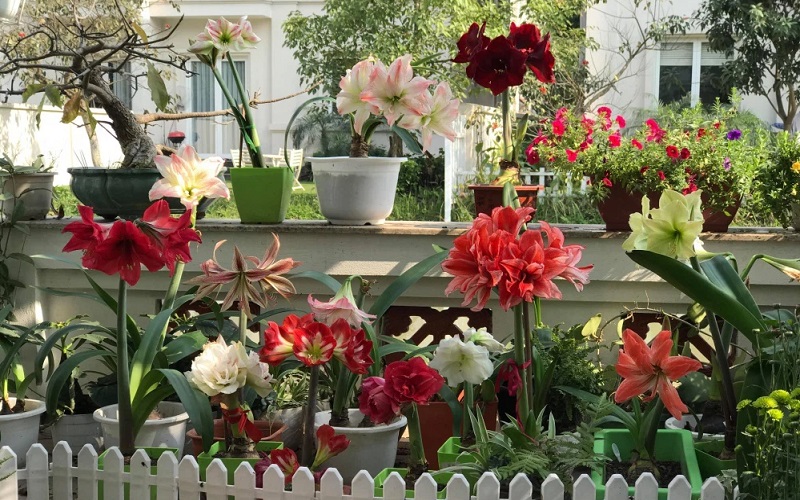 Significance of Amaryllis
Significance of Amaryllis
Amaryllis also has the added benefit of purifying the air and filling your home with a subtle fragrance, creating the ambiance of a miniature park right in your living space.
Additionally, Amaryllis has medicinal properties and can be used to treat various ailments such as infections, bleeding, and inflammation.
For further reading:
4 How to Grow and Care for Amaryllis
To ensure the best growth and development of your Amaryllis, it is essential to select high-quality seeds, fertile soil, appropriate pots, and maintain a favorable temperature. Choose bulbs from a healthy mother plant, free from disease and rot, for propagation. Opt for the largest, healthiest bulbs available.
Select a pot with adequate drainage holes and a size that accommodates the bulb comfortably.
The ideal soil for Amaryllis is well-aerated, nutrient-rich, with a high pH level, excellent drainage, and moderate moisture retention. Avoid soil that does not drain well, as this can cause the bulbs to rot.
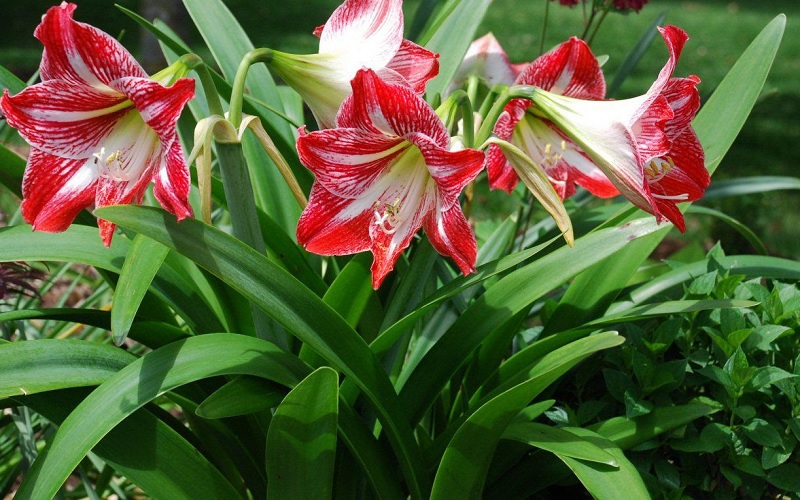 How to Grow and Care for Amaryllis
How to Grow and Care for Amaryllis
Planting Amaryllis
For Amaryllis bulbs with outer shells, gently peel away the dry outer layers before planting. If the bulbs are dry, soak them in water for a day to allow them to absorb enough moisture before planting.
Fill your chosen pot with nutrient-rich soil, compost, and ash, creating a hole in the center to place the bulb. Ensure the bulb is positioned with half of its surface exposed and the sprout facing upward.
Alternatively, you can opt for a simple hydroponic setup. Prepare a container of water with dissolved fertilizer, ensuring that only half of the bulb is submerged. Regularly change the water to prevent rot.
 Amaryllis does not require frequent watering
Amaryllis does not require frequent watering
Caring for Amaryllis
Watering once or twice a week is usually sufficient, and it is best to keep the plant in a cool, well-ventilated area.
Pay close attention to your plant after about 20 days. If you notice small leaves emerging, begin regular fertilizing and move the plant to a sunny location to promote growth.
Amaryllis thrives in sunlight, and the amount of light it receives will influence the shape of its flowers and leaves. When exposed to ample sunlight, the plant produces shorter flowers and leaves, while shade results in longer growth. Morning sun is ideal, as it allows the plant to absorb more light.
Regularly prune old branches and maintain a consistent fertilizing schedule.
Amaryllis is susceptible to pests and diseases, so regular inspections and treatments with specialized pesticides like Danitol are essential. Remove any leaves showing signs of insect damage or bites to prevent the spread of infestation.
5 Where to Buy Amaryllis and Price Range
You can find Amaryllis bulbs at local nurseries or garden centers, ensuring you select a reputable source for healthy bulbs. Alternatively, you can order them from trusted online vendors specializing in plant sales.
The price of Amaryllis bulbs varies depending on the color and variety, but they typically range from 100,000 to 300,000 VND per bulb.
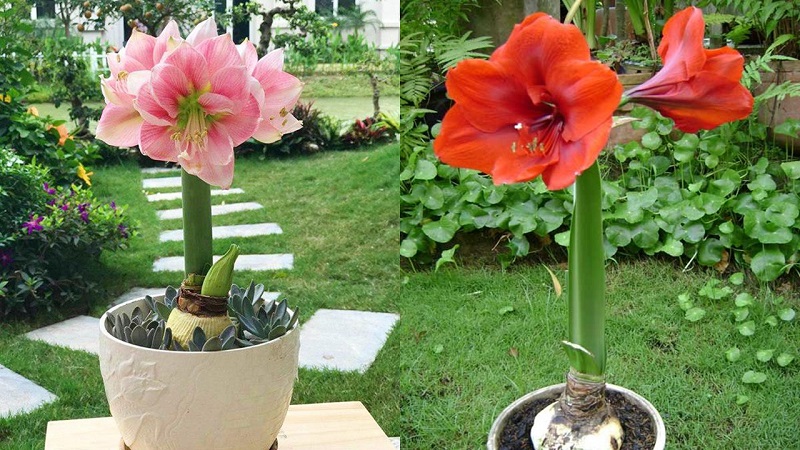 Where to Buy Amaryllis and Price Range
Where to Buy Amaryllis and Price Range
6 Amaryllis Photo Collection
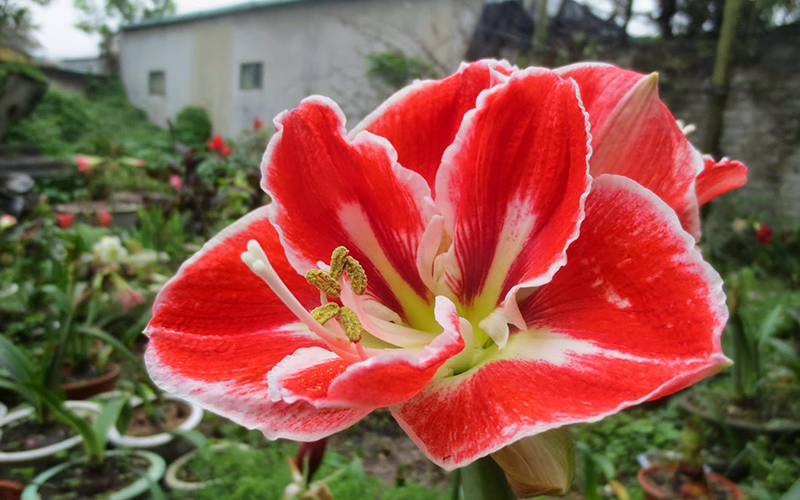 Amaryllis ‘Samba’ (Source: Rieng Mot Goc Vuon)
Amaryllis ‘Samba’ (Source: Rieng Mot Goc Vuon)
 Amaryllis ‘Pink Nymph’ (Source: Rieng Mot Goc Vuon)
Amaryllis ‘Pink Nymph’ (Source: Rieng Mot Goc Vuon)
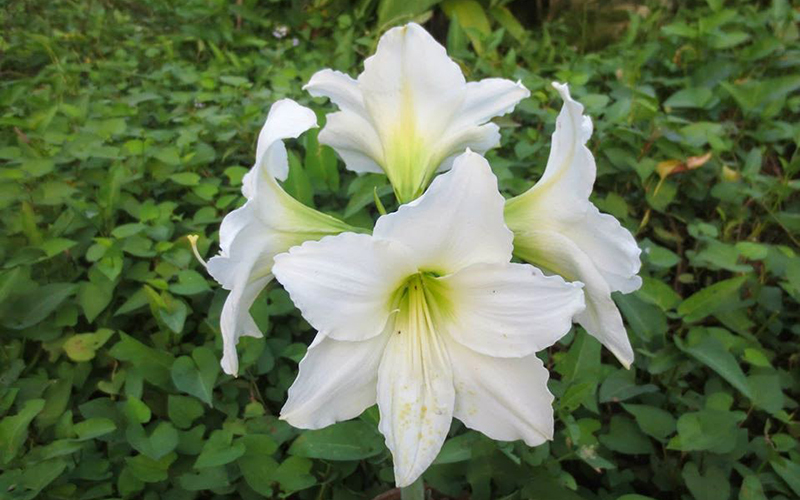 Amaryllis (White) (Source: Rieng Mot Goc Vuon)
Amaryllis (White) (Source: Rieng Mot Goc Vuon)
 Amaryllis in Bloom
Amaryllis in Bloom
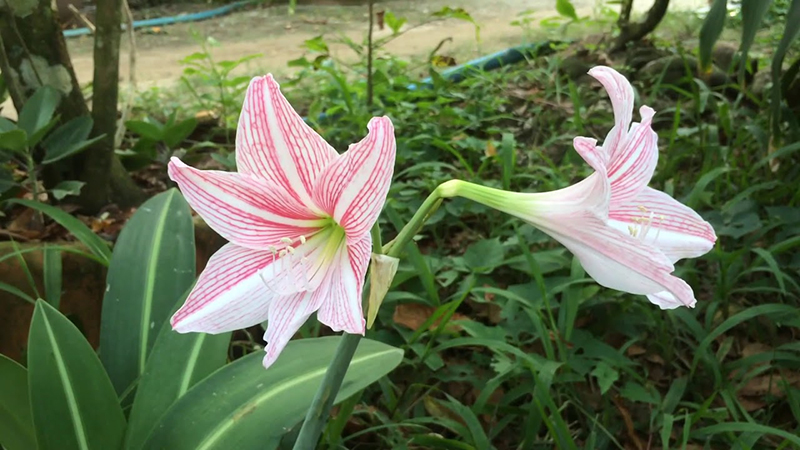 Amaryllis with Pink Stripes
Amaryllis with Pink Stripes
We hope this guide provides you with all the information you need to cultivate a vibrant and healthy Amaryllis garden. Happy gardening!


































